Border Collie Breed standards established by the FCI (FEDERATION CYNOLOGIQUE INTERNATIONALE) on 24.06.1987
FCI-CLASSIFICATION : Group 1 Sheepdogs
GENERAL APPEARANCE:
The general appearance of a border collie shall be that of a well proportioned dog, the smooth outline showing quality, gracefulness and perfect balance, combined with sufficient substance to ensure that it is capable of enduring long periods of active duty in its intended task as a working sheepdog. Any tendency to coarseness or weediness is undesirable. Honorable scars and broken teeth incurred in the line of duty are acceptable
CHARACTERISTICS :
The Border Collie is highly intelligent, with an instinctive tendency to work and is readily responsive to training. Its keen, alert and eager expression add to its intelligent appearance.
TEMPERAMENT :
A Border Collie’s temperament is stable, biddable and willing to please, steady with no sign of timidness or aggression. Any sign of aggression is uncharacteristic of this breed and should not be tolerated.
IMPORTANT PROPORTIONS :
Skull and foreface approximately equal in length. Body slightly longer than height at shoulder.
HEAD & SKULL:
The skull is broad and flat between the ears, slightly narrowing to the eye, with a pronounced stop, cheeks deep but not prominent. The muzzle tapering to the nose is strong and the same length as the skull. The lips are tight and clean and the nose is large with open nostrils. corpoitaliano.it The nose colour in all dogs will be a solid colour, with no pink or light pigment, and shall complement the background colour of the dog.
EYES :
The eyes are set wide apart, oval shaped of moderate size, harmonising with the colour of the coat but darker colour preferred, expect in the case of chocolate where a lighter colour is permissible and in the case of merles where blue is permissible. The expression is mild but keen, alert and intelligent.
EARS :
The ears should be of medium size and texture, set well apart, carried semi-erect. They are sensitive in their use, and inside well furnished with hair
MOUTH :
The teeth should be sound, strong and evenly spaced, the lower incisors just behind but touching the upper, that is called a scissor bite
NECK :
The neck is of good length, strong and muscular, slightly arched and broadening to the shoulders, without throatiness or coarseness.
FOREQUARTERS :
The shoulders are long, and well angulated to the upper arm, neither in nor out at elbow. The forelegs are well boned, straight and parallel when viewed from the front. Pasterns show flexibility with a slight slope when viewed from the side.
See forequarter standards here
BODY :
The body is moderately long with well sprung ribs tapering to a fairly deep and moderately broad chest. The loins are broad, deep, muscular and only slightly arched, flanks deep and not cut up.
HINDQUARTERS :
The hindquarters are broad and muscular, in profile sloping gracefully to the set on of tail. The thighs are long, broad, deep and muscular with well turned stifles and strong hocks, well let down and when viewed from the rear are straight and parallel.
See hindquarter standards here
FEET :
Oval in shape, pads deep, strong and sound, toes arched and close together. Nails short dianabol steroids and strong.
TAIL :
The tail is moderately long, set on low, well furnished and with an upward swirl towards the end, completing the graceful contour and balance of the dog. The tail may be raised in excitement, but not carried over the back.
MOVEMENT :
The movement is free, smooth and tireless, with a minimum lift of the feet, conveying the impression of the ability to move with great stealth. The action, viewed from the front should be straight forward and true, without weakness at shoulders, elbows or pasterns. Viewed from behind the quarters trust with strength and flexibility, with hocks not close nor too far apart, When trotting, the dog’s feet tend to come closer together as speed increases, but when the dog comes to rest he should stand four square. Any tendency to stiltiness, cowhocks or bow hocks is a serious fault.
COAT :
Double coated, with a moderately long, dense, medium textured topcoat while the undercoat is short, soft and dense, making a weather resisting protection, with abundant coat to form mane, breeching and brush. On face, ear tips, forelegs, hind legs from hock to ground, the hair is short and smooth.
COLOUR :
Black and white, blue and white, chocolate and white, red and white, blue Merle and the tri-colour black, tan and white. In each case the basic body colour must be predominate and be the background colour of the dog
In other words, white must be present but never predominate
SIZE :
Ideal height is 53cm(21ins) for male, females slightly less
FAULTS :
Any deviation from the foregoing should be considered a fault, the seriousness of the
fault depending upon the extent of the deviation, and the degree to which working ability would
be impacted.
NOTES :
- Males should have two apparently normal testicles fully descended into the scrotum. Broad and muscular, in profile sloping gracefully to the low set tail.
- Only functionally and clinically healthy dogs, with breed typical conformation, should be used for breeding.
